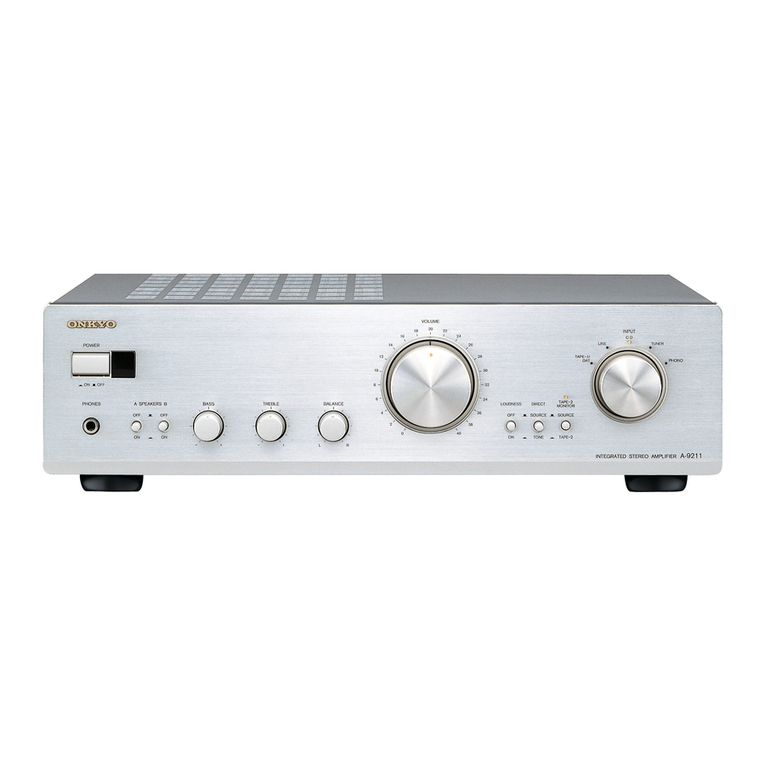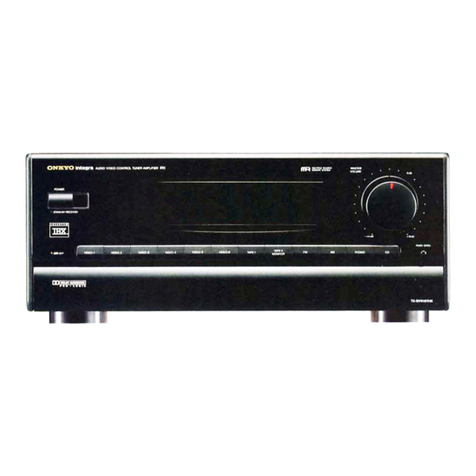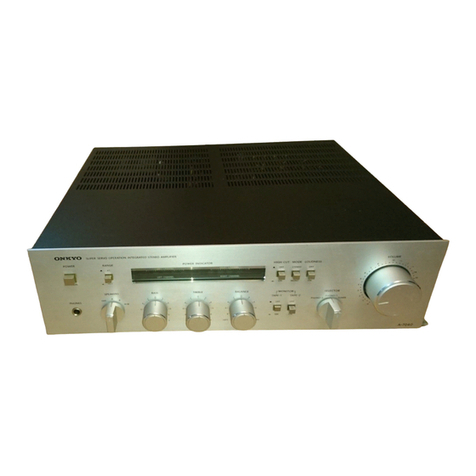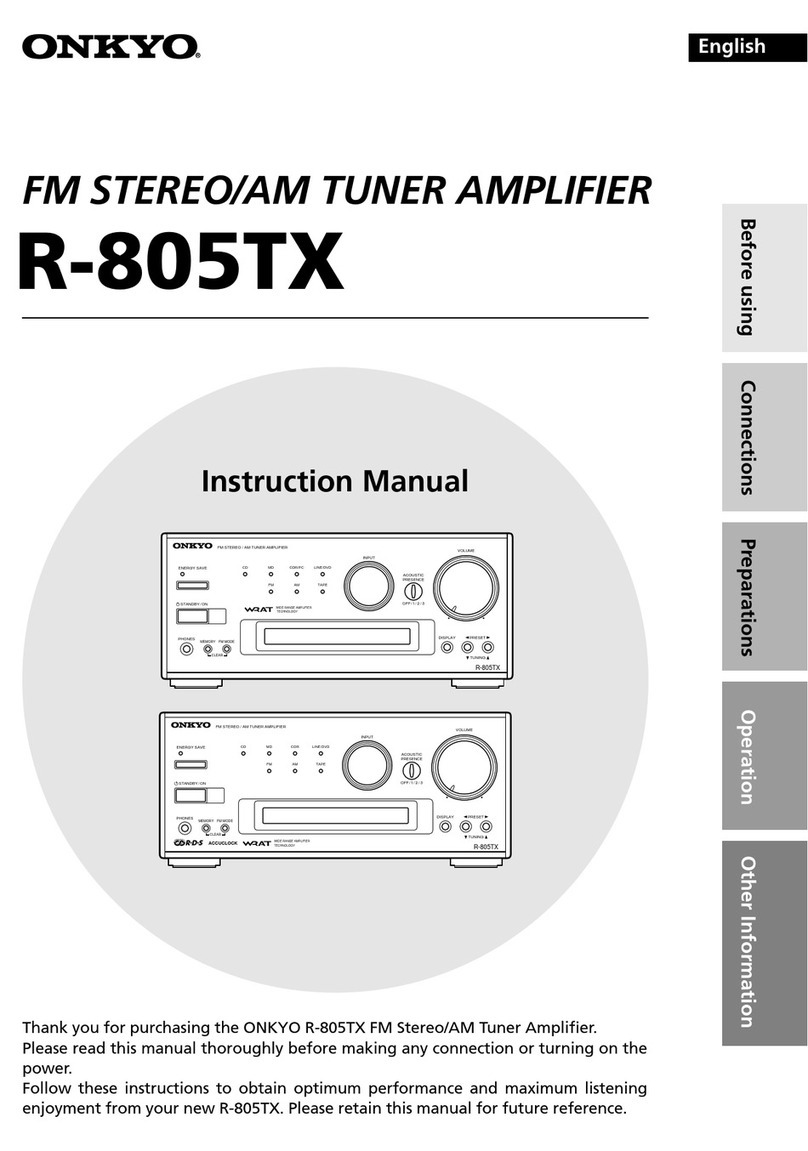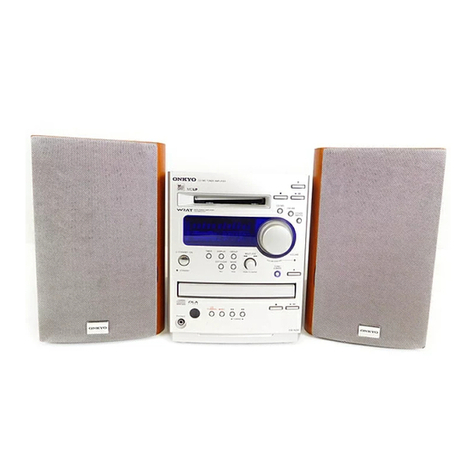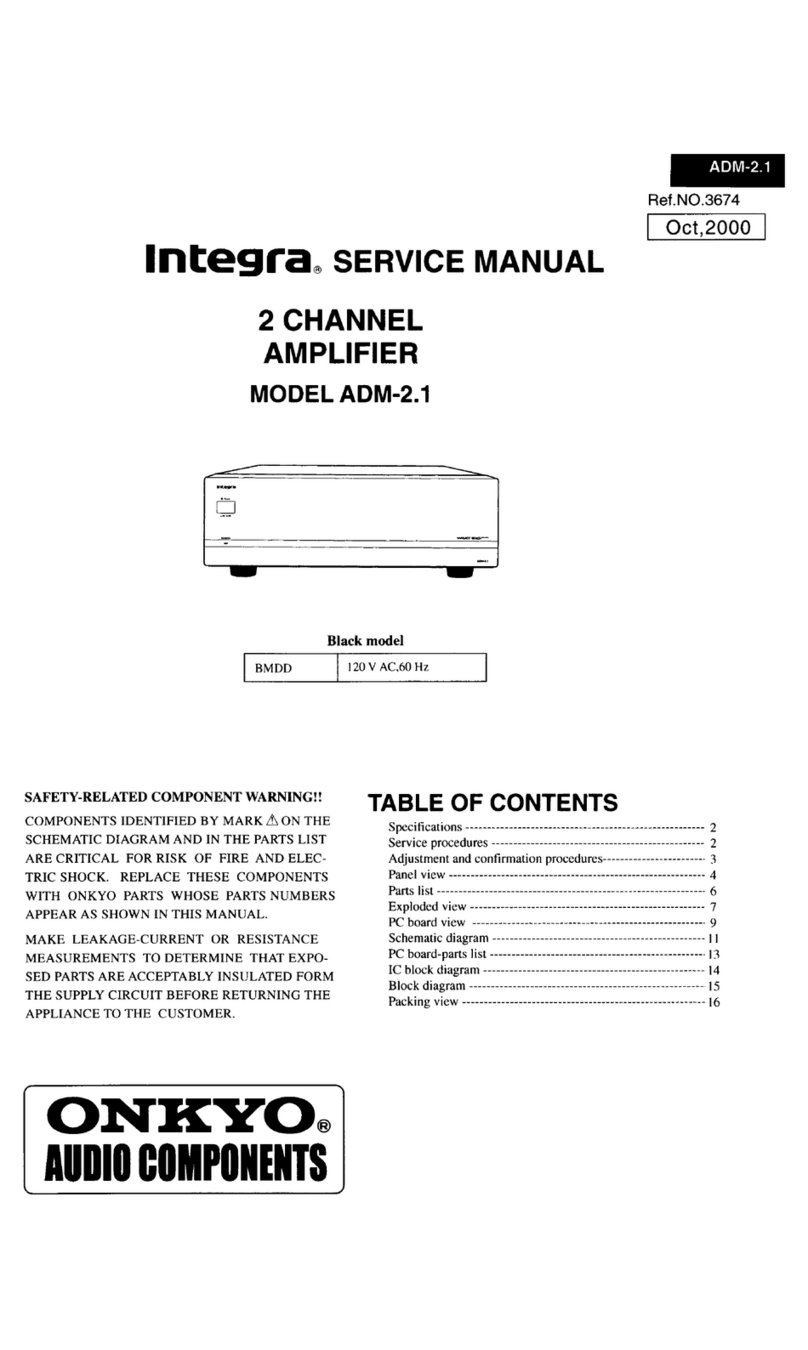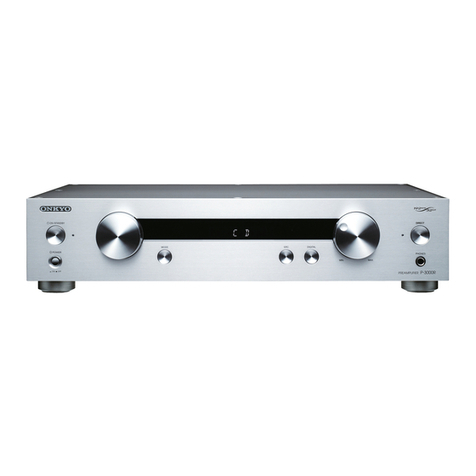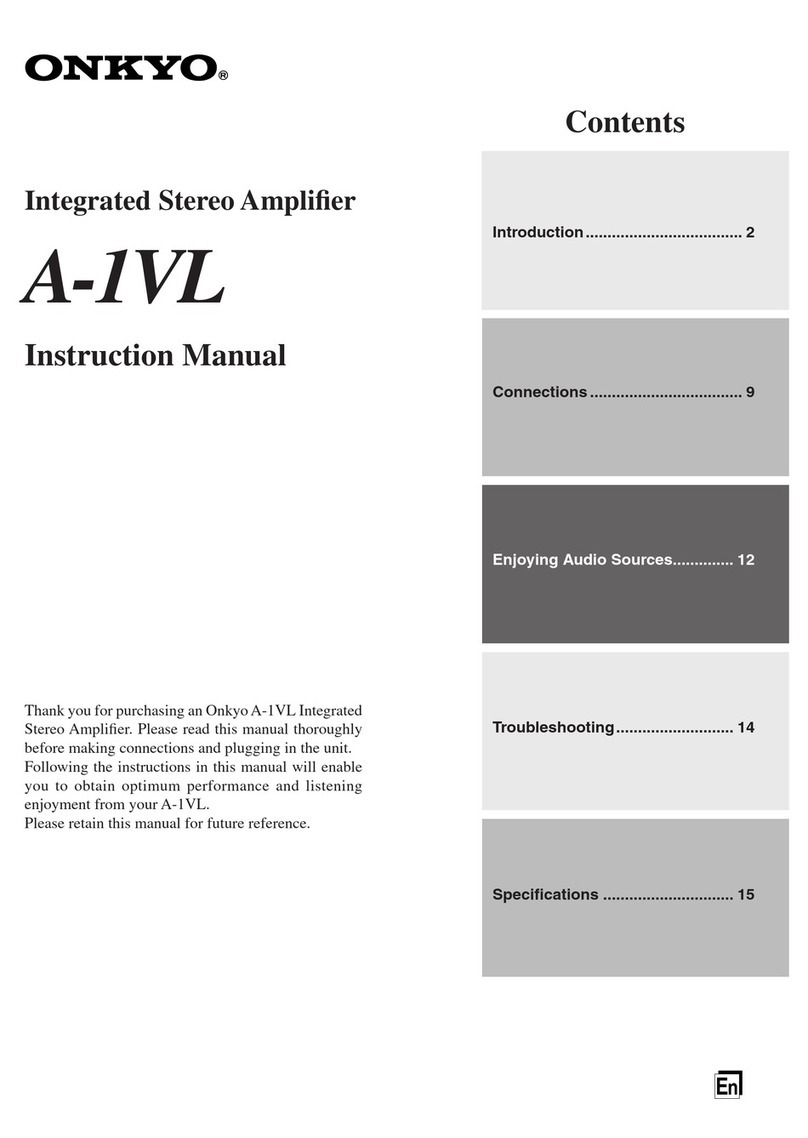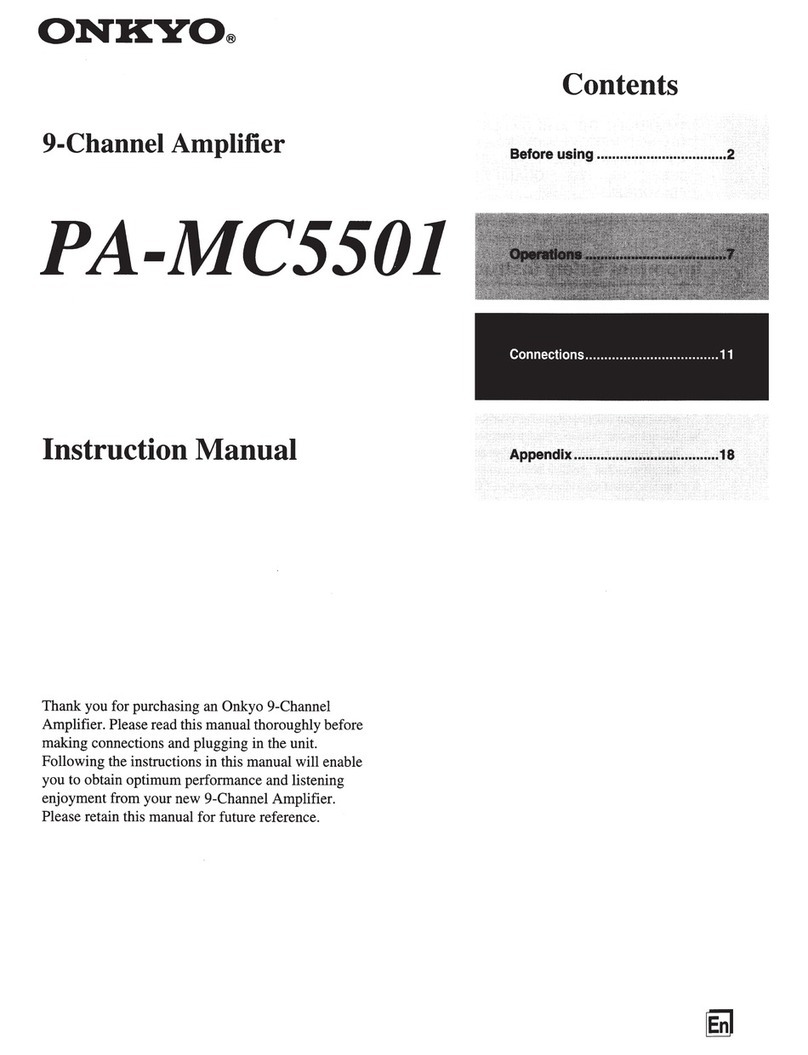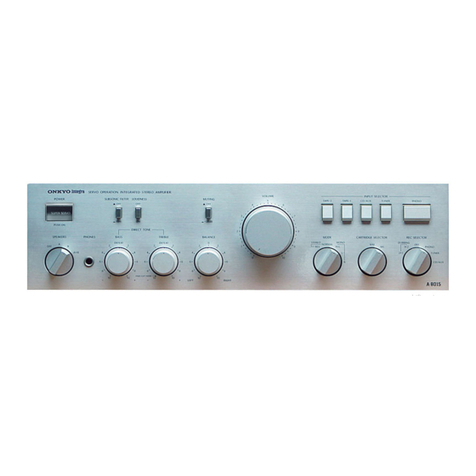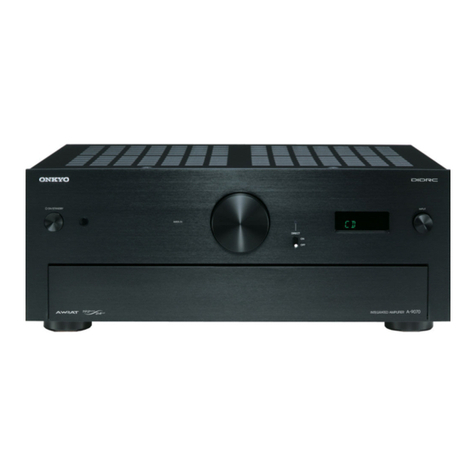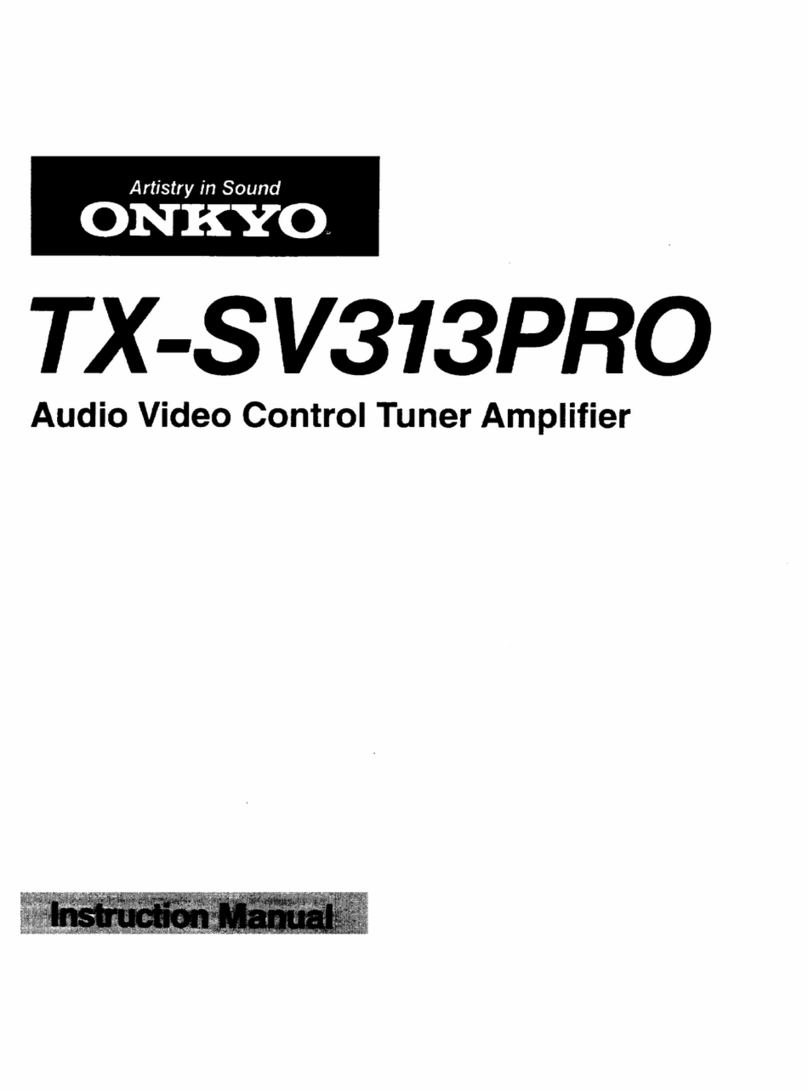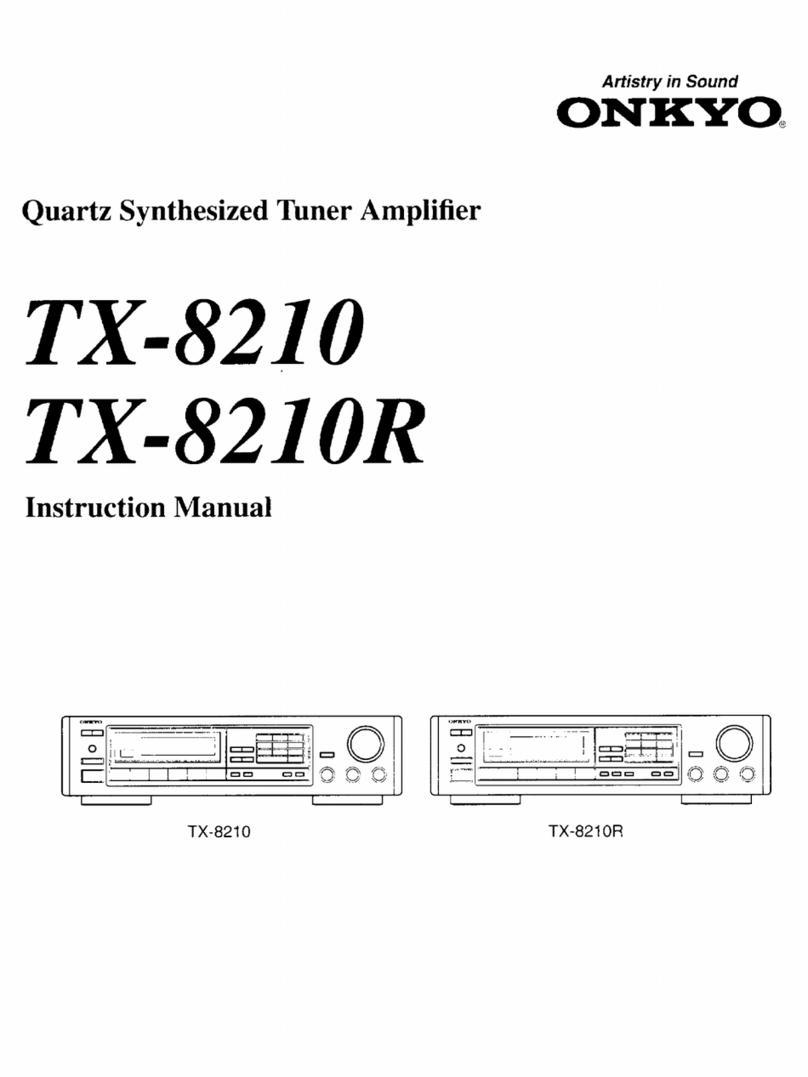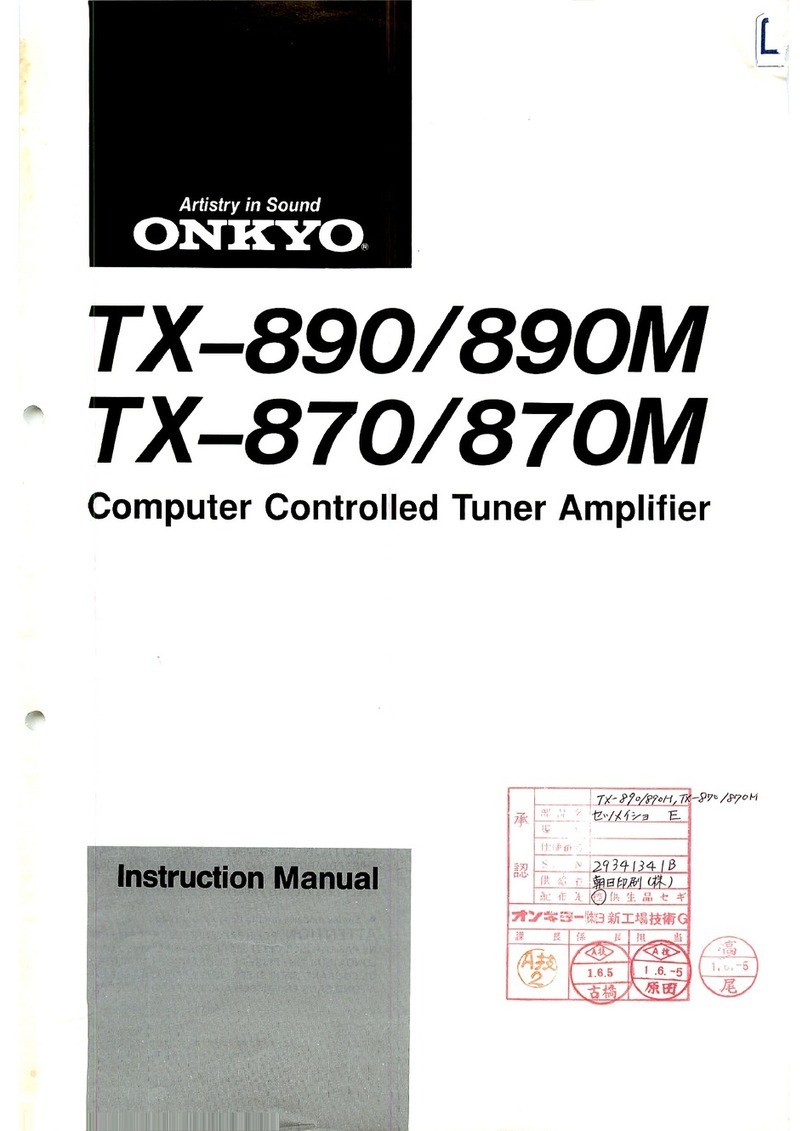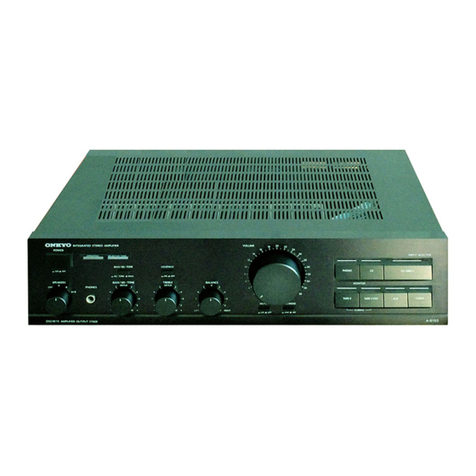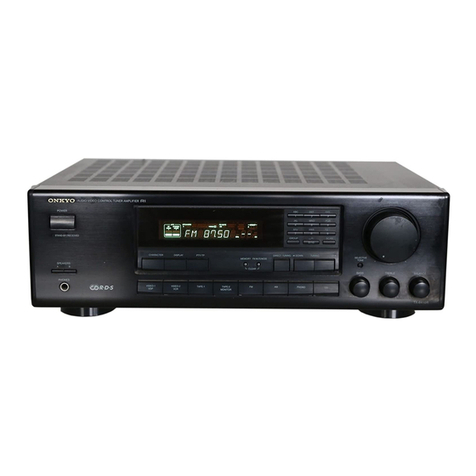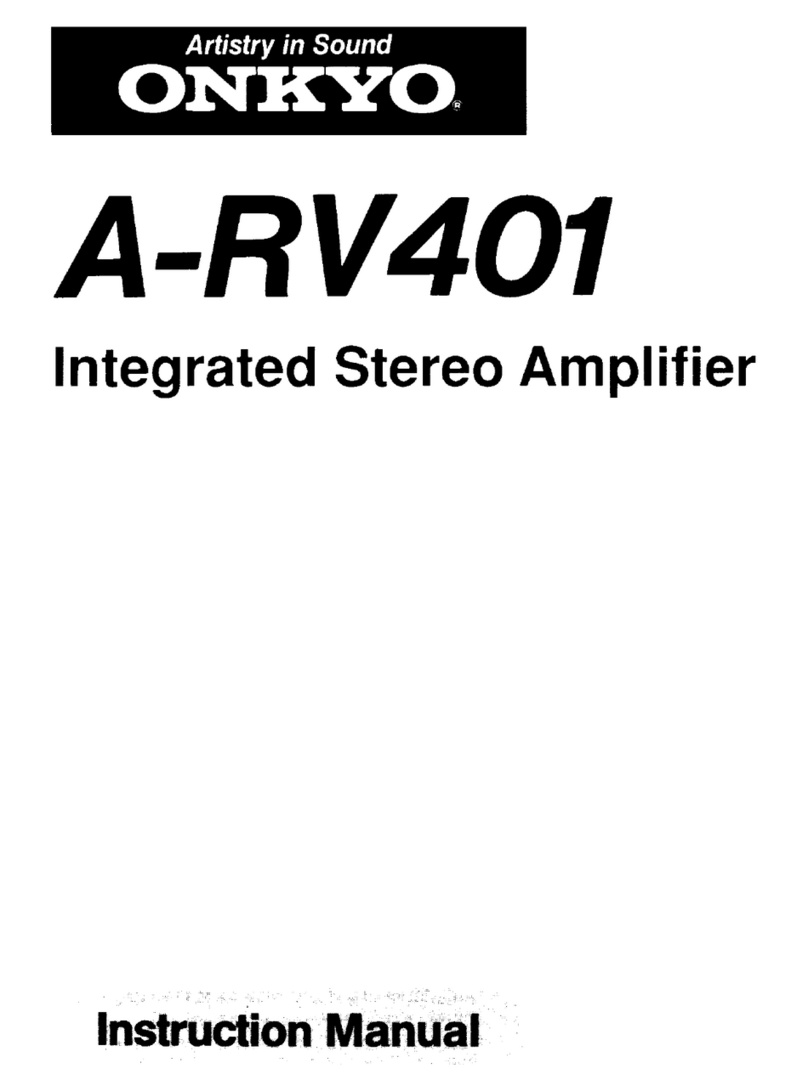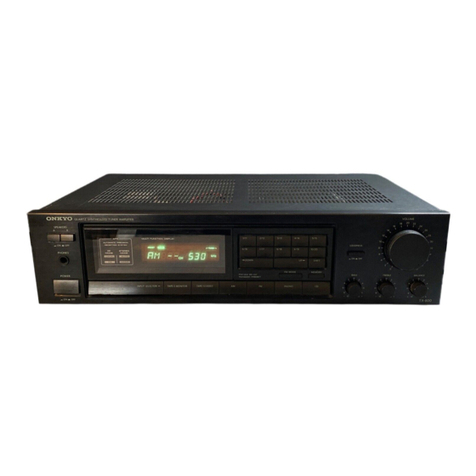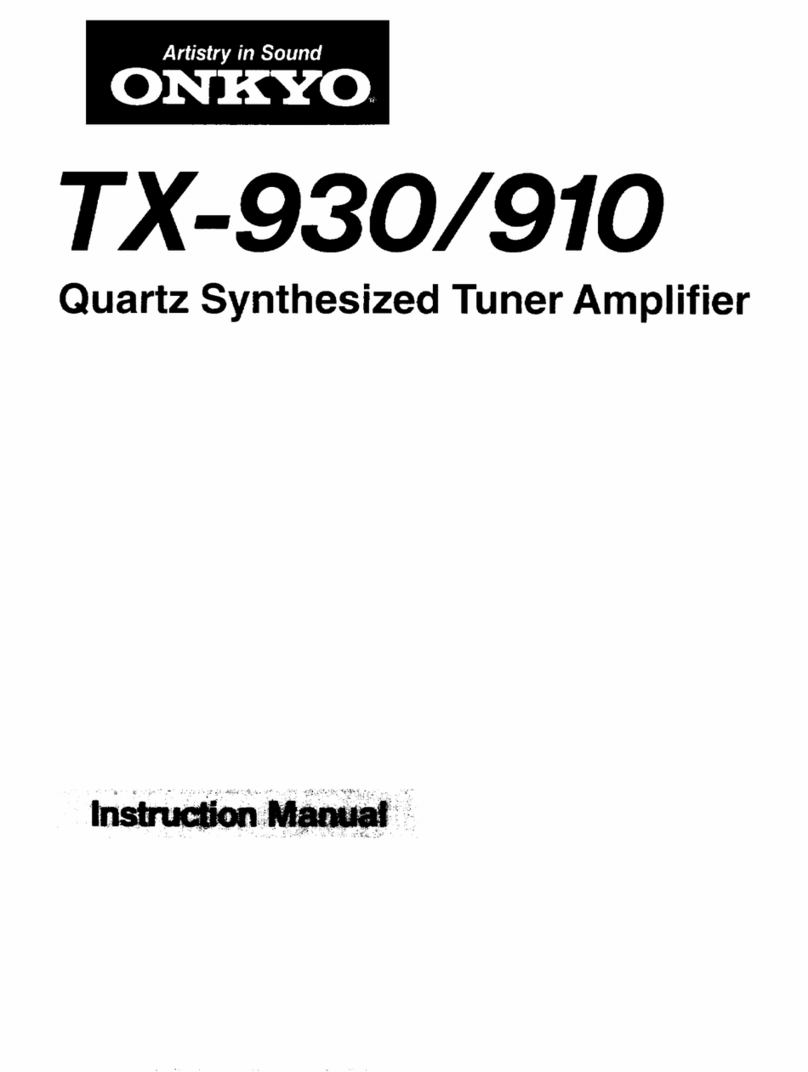
e
Congratulations
on
your
purchase
of
the
ONKYO
7TX-906,
TX-904
Tuner-Amplifier.
®
Please
read
this
manual
thoroughly
before
making
connections
and
turning
power
on.
®
Following
the
instructions
in
this
manual
will
enable
you
to
obtain
optimum
performance
and
listening
enjoyment
from
your
new
TX-906,
TX-904.
©
Please
retain
this
manual
for
future
reference.
CONTENTS
IMPOrtant
SAfFEQuar
dS...
ccc
cee
ceessanssaaeeensaasasscssesccccuecereeseneeerssesauseuauauuuscuusssusascaueuecssecereesueseestensvereds
PreCAUthOn
0...
ccccccccccccces
esses
eeeeeeceeeeneesanessasassssseesseaseesansssssenseeusdeacavecceceacsusseuanscestuceversseeessersacunsansevecteveeserecereeeenas
FOATULES
ooo...
ccccccccccccccceeceassssueseceessecenaeaeeassaseaessssseeeeeeeesssseseuaueegedseceesececeeanavsvsenanaseeeereneaseesauuaasaaaaaaeravssesteserseuseeeaas
Se
olE
Tal.
1419)
see
Before
using
this
Unit........0..
cc
cccccccccssesceeeeeecceceeeensensnusueusceseeesevesseseveersaseesecsseususupensnnnaaseeseseucenecsnttantesseesens
SYSTEM
CONNECTIONS
oo
ccccccsccesecccecsccesetececcceuaueaeecessensuaaevesenenauaseseesaurassesdseesusecsesececsuarsesesecsausteeseveceusaaarseseces
Control
POSITIONS
ANd
NAMES
.........0..
cee
ccsceneeee
cee
seveceeceecauseesuenenevevessesseeecuananaeseeees
bevueeeeeeecesteceterevseveetenenens
OPEratiOits
ooo...
ccccc
ccc
ececcceccecuuceneeseesesaeesessuucaueuauceccecauevseceeceeseusectestessaueedeateesanauvesesecauarececeuscettceeseerecsuteeseerees
Use
of
Surround
mode
(TX-906
only)..........0.0..00.8.
Listening
to
devices
connected
to
the
TX-906/904
in
another
room
..0.0...ccccccccccccsesecsseseceeenesanas
Troubleshooting
Quide................cccc
cc
cccccceccesesssteeneeenees
SPECIFICATIONS
«20.0.0.
icccccccssceceeceeevssuauseeeecsseueeaetesecearaneners
CAUTION
“TO
REDUCE
THE
RISK
OF
ELECTRIC
SHOCK,
DO
NOT
REMOVE
COVER
(OR
BACK).
NO
USER-SERVICEABLE
PARTS
INSIDE.
REFER
SERVICING
TO
QUALIFIED
SERVICE
PERSONNEL.”
CAUTION
RISK
OF
ELECTRIC
SHOCK
DO
NOT
OPEN
@
The
lightning
flash
with
arrowhead
symbol,
within
an
equilateral
triangle,
is
intended
to
alert
the
user
to
the
presence
of
uninsulated
“dangerous
voltage”
within
the
product's
enclosure
that
may
be
of
suffi-
clent
magnitude
to
constitute
a
risk
of
electric
shock
to
persons.
@
The
exclamation
point
within
an
equilateral
triangle
is
intended
to
alert
the
user
to
the
presence
of
im-
portant
operating
and
maintenance
(servicing)
in-
structions
tn
the
literature
accompanying
the
appli-
ance.
Important
safeguards
6A.
.
Read
Instructions
—
All
the
safety
and
operating
instructions
should
be
read
before
the
appliance
is
operated.
Retain
Instructions
-
The
safety
and
operating
instructions
should
be
retained
for
future
reference.
Heed
Warnings
~
All
warnings
on
the
appliance
and
in
the
op-
erating
instructions
should
be
adhered
to.
Follow
Instructions
—
All
operating
and
use
instructions
should
be
followed.
Water
and
Moisture
—
The
appliance
shou!d
not
be
used
near
water
—
for
example,
near
a
bathtub,
washbaowl,
kitchen
sink.
laundry
tub,
in
a
wet
basement,
or
near
a
swimming
pool,
and
the
like.
Carts
and
Stands
—
The
appliance
should
be
used
only
with
a
cart
or
stand
that
ts
recommended
by
the
manufacturer.
An
appliance
and
cart
combination
should
be
moved
with
care.
Quick
stops,
excessive
force,
and
uneven
surfaces
may
cause
the
appliance
and
cart
combination
to
overturn.
PORTABLE
CART
WARNING
531254
.
Wall
or
Ceiling
Mounting
-
The
appliance
should
be
mounted
to
a-wall
or
ceiling
only
as
recommended
by
the
manufacturer.
eee
eee
ee
ee
ee
eee
ee
eee
eee
eee
eee
eee
eee
ee
ee
ee
ee
ee
ee
ee
ee
ee
ee
ee
ee
eee
ee
“WARNING”
“TO
REDUCE
THE
RISK
OF
FIRE
OR
ELECTRIC
SHOCK,
DO
NOT
EXPOSE
THIS
APPLIANCE
TO
RAIN
OR
MOISTURE.”
@
For
models
having
power
cords
with
a
polarized
plug.
CAUTION:
To
PREVENT
ELECTRIC
SHOCK
DO
NOT
USE
THIS
(POLARIZED)
PLUG
WITH
AN
EXTENSION
CORD,
RE-
CEPTACLE
OR
OTHER
QUTLET
UNLESS
THE
BLADES
CAN
BE
FULLY
INSERTED
TO
PREVENT
BLADE
EXPOSURE.
@®
Sur
les
modéiles
dont
ta
fiche
est
polarisée.
ATTENTION:
Pour
PREVENIR
LES
CHOCS
ELECTRIQUES
NE
PAS
UTILISER
CETTE
FICHE
POLARISEE
AVEC
UN
PRO-
LONGATEUR,
UNE
PRISE
DE
COURANT
OU
UNE
AUTRE
SORTIE
DE
COURANT,
SAUF
SI
LES
LAMES
PEUVENT
ETRE
INSEREES
A
FOND
SANS
EN
LAISSER
AUCUNE
PARTIE
A
DECOUVERT.
8.
Ventilation
—
The
appliance
should
be
situated
so
that
its
location
or
position
does
not
interfere
with
its
proper
ventilation.
For
exampie,
the
appliance
should
not
be
situated
on
a
bed,
sofa,
rug,
or
similar
surface
that
may
block
the
ventilation
openings;
or,
placed
in
a
built-in
installation,
such
as
a
bookcase
or
cabinet
that
may
impede
the
flow
of
air
through
the
ventilation
openings.
9.
Heat
—
The
appliance
should
be
situated
away
from
heat
sources
such
as
radiators,
heat
registers,
stoves,
or
other
appliances
(including
amplifiers)
that
produce
heat.
10.
Power
Sources
—
The
appliance
should
be
connected
to
a
power
supply
only
of
the
type
described
in
the
operating
instructions
or
as
marked
on
the
appliance.
11.
Polarization
—
lf
the
appliance
ts
provided
a
polarized
plug
having
on
blade
wider
than
the
other.
please
read
the
following
information:
The
polarization
of
the
plug
is
a
safety
feature.
The
polarized
plug
will
only
fit
the
outlet
ane
way.
If
the
plug
does
not
fit
fully
into
the
outlet,
try
reversing
it.
lf
there
is
stili
trouble,
the
user
should
seek
the
services
of
a
qualified
electrician.
Under
no
circumstances
should
the
user
at-
tempt
to
defeat
the
polarization
of
the
plug.
12.
Power-Cord
Protection
—
Power-supply
cords
should
be
routed
so
that
they
are
not
likely
to
be
walked
on
or
pinched
by
items
placed
upon
or
against
them,
paying
particular
attention
to
cords
at
plugs,
convenience
receptacles,
and
the
point
where
they
exit
from
the
ap-
pliance.
13.
Cleaning
—
The
appliance
should
be
cleaned
only
as
recommended
by
the
manufacturer.
14.
Power
Lines
—
An
outdooor
antenna
should
be
located
away
from
power
lines.
15.
Nonuse
Periods
~-
The
power
cord
of
the
appliance
should
be
unplugged
from
the
outlet
when
left
unused
for
a
jong
period
of
time.
—|-
